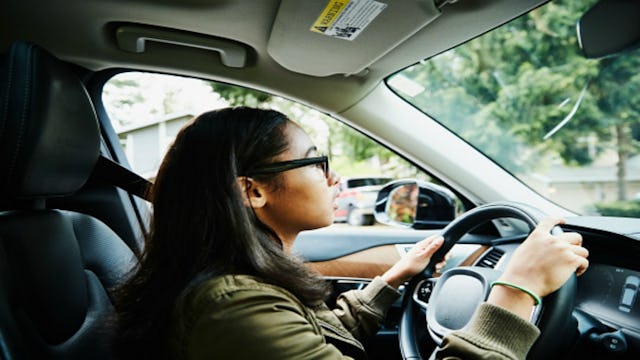Fewer Teens Are Getting Their Driver's License

The day I turned 16 and was eligible to get my driver’s license, I was waiting at the front door of the DMV before they even opened. More than just a rite of adolescent passage, in the 80’s getting your driver’s license immediately upon being old enough was just as normal as teased-out bangs and Aqua Net hairspray. Nobody hesitated for even a single day, or entertained the notion that they would not be cruising through a fast food joint with a car full of friends on their 16th birthday.
When my first two kids turned 16, I chauffeured them directly to the DMV on their birthdays. There wasn’t even the slightest hesitation on their part, or mine. They had completed the one year of permit driving (driving with an adult), and I was confidant they were ready to drive solo. But more than the fact I thought they were ready to drive, was the thought that they had to drive. It’s a vital part of maturing and nurturing their growing independence, and most importantly, it’s a very necessary component of adulting — so why wouldn’t they drive?
That’s the question many parents are asking themselves today, as they continue to taxi around teenagers who are more than just age-eligible to drive — they’re physically and emotionally capable to drive as well — but for some reason, they don’t want to drive.
Just how many teens are avoiding getting behind the wheel? Well, according to a new study by Michael Sivak and Brandon Schoettle at the University of Michigan Transportation Research Institute, the percentage of teenagers who carry a driver’s license has been decreasing steadily in recent years. In 2014, only 24% of 16-year-olds had their driver’s license, while in 1983 almost 47% did. To take into account states with different legal driving ages, the study looked at older teens as well, and found that in that same years, 69% of 19-year-olds had their license. In 1983, it was 87%.
So what are the excuses, and why are we seeing a trend over the past few years of teenagers eschewing driving all together, and being perfectly content to remain in the passenger seat.
1. More internet, less driving
Perhaps one of the sadder reasons why teens are driving less is because they literally don’t have to. With social media technologies and face-to-face software like Skype, teens are content to hang out virtually. Researchers found that the percentage of young drivers is inversely related to the proportion of internet users. It seems our teens no longer have to leave the house to party.
2. No jobs, no need for wheels
The recent recession brought with it the unintended consequence of older adults taking part-time jobs to make ends meet-jobs that once would have been filled primarily by teens. High unemployment rates among teens means no need for a driver’s license to drive to work, and also no part-time paycheck to help with gas and car payments. Right now, our jobless teens (and their parents) are unable to subsidize car payments, car insurance, and other car expenses.
3. Uber and public transportation
This is a generation of teens that are not only quick to use services like Uber and Lyft, they don’t shy away from public transportation. They are also choosing lifestyles and activities that require less time in cars. While there are plenty of socially responsible reasons for not owning or driving a car, even if a teen won’t have a car of their own, learning to drive safely is a vital life skill.
4. Waiting until 18
With the implementation of graduated licensing programs in a majority of states (teens must hold a learner’s permit and/or drive a minimum number of adult accompanied driving hours in order to become eligible for a license), many teens are finding the requirements too time consuming, and are opting to wait until turning 18, because at legal adulthood the requirements are no longer needed.
5. Just too busy
And finally, the top reason teens aren’t getting their license? In a survey, teens answered that they didn’t have enough time and were too busy. Surprised? I’m not. Today’s teens live 18 hour days between school, athletics, clubs, volunteering, youth groups, civic organizations, and the 12 AP classes they’re trying to master. So it’s no surprise that just trying to keep all those balls in the air means the one that gets dropped is the driving one. It’s far easier to get all that styudying done from the backseat (and it makes texting in a car way safer).
Ironically enough, the same graduated licensing programs intended to make teen driving safer (and they do) are ending up being somewhat of a deterrent to actually getting a license. But it’s those exact programs that make driving safer for all of us, and need not be put off or ignored altogether.
If you have a child entering the teen years, it’s never to early to start talking about driving, and preparing him or her for the licensing process. Don’t delay it or put it off. Even if they will not have a car of their own, the importance of learning to drive safely as early as they can cannot be underestimated.